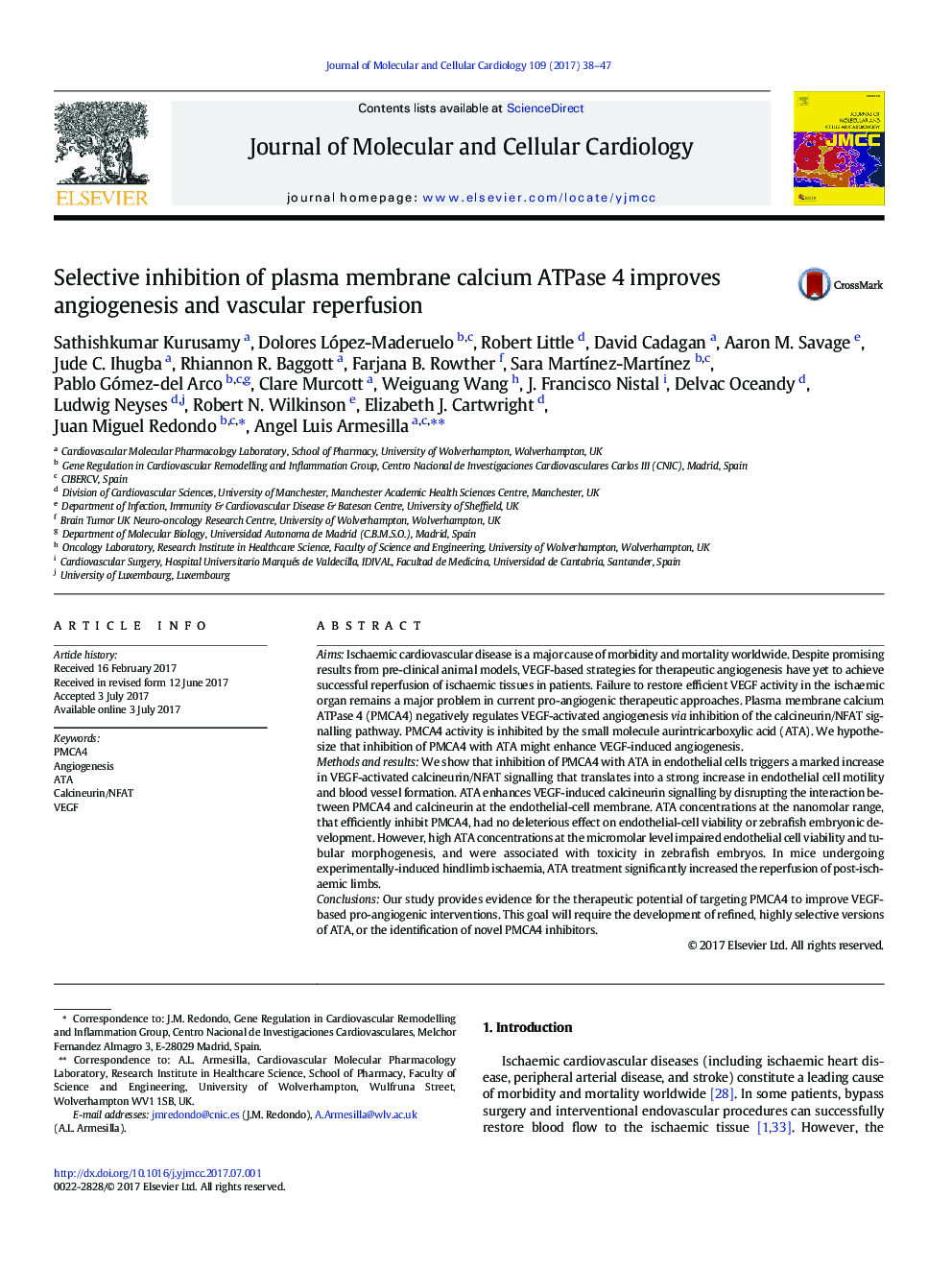| کد مقاله | کد نشریه | سال انتشار | مقاله انگلیسی | نسخه تمام متن |
|---|---|---|---|---|
| 5533659 | 1550397 | 2017 | 10 صفحه PDF | دانلود رایگان |

- Aurintricarboxylic acid (ATA) disrupts the PMCA4/calcineurin interaction.
- Inhibition of PMCA4 with ATA increases VEGF-activated calcineurin/NFAT signalling.
- ATA enhances VEGF-induced endothelial cell motility and tubular morphogenesis.
- ATA improves post-ischaemic hind limb reperfusion in vivo.
AimsIschaemic cardiovascular disease is a major cause of morbidity and mortality worldwide. Despite promising results from pre-clinical animal models, VEGF-based strategies for therapeutic angiogenesis have yet to achieve successful reperfusion of ischaemic tissues in patients. Failure to restore efficient VEGF activity in the ischaemic organ remains a major problem in current pro-angiogenic therapeutic approaches. Plasma membrane calcium ATPase 4 (PMCA4) negatively regulates VEGF-activated angiogenesis via inhibition of the calcineurin/NFAT signalling pathway. PMCA4 activity is inhibited by the small molecule aurintricarboxylic acid (ATA). We hypothesize that inhibition of PMCA4 with ATA might enhance VEGF-induced angiogenesis.Methods and resultsWe show that inhibition of PMCA4 with ATA in endothelial cells triggers a marked increase in VEGF-activated calcineurin/NFAT signalling that translates into a strong increase in endothelial cell motility and blood vessel formation. ATA enhances VEGF-induced calcineurin signalling by disrupting the interaction between PMCA4 and calcineurin at the endothelial-cell membrane. ATA concentrations at the nanomolar range, that efficiently inhibit PMCA4, had no deleterious effect on endothelial-cell viability or zebrafish embryonic development. However, high ATA concentrations at the micromolar level impaired endothelial cell viability and tubular morphogenesis, and were associated with toxicity in zebrafish embryos. In mice undergoing experimentally-induced hindlimb ischaemia, ATA treatment significantly increased the reperfusion of post-ischaemic limbs.ConclusionsOur study provides evidence for the therapeutic potential of targeting PMCA4 to improve VEGF-based pro-angiogenic interventions. This goal will require the development of refined, highly selective versions of ATA, or the identification of novel PMCA4 inhibitors.
Journal: Journal of Molecular and Cellular Cardiology - Volume 109, August 2017, Pages 38-47